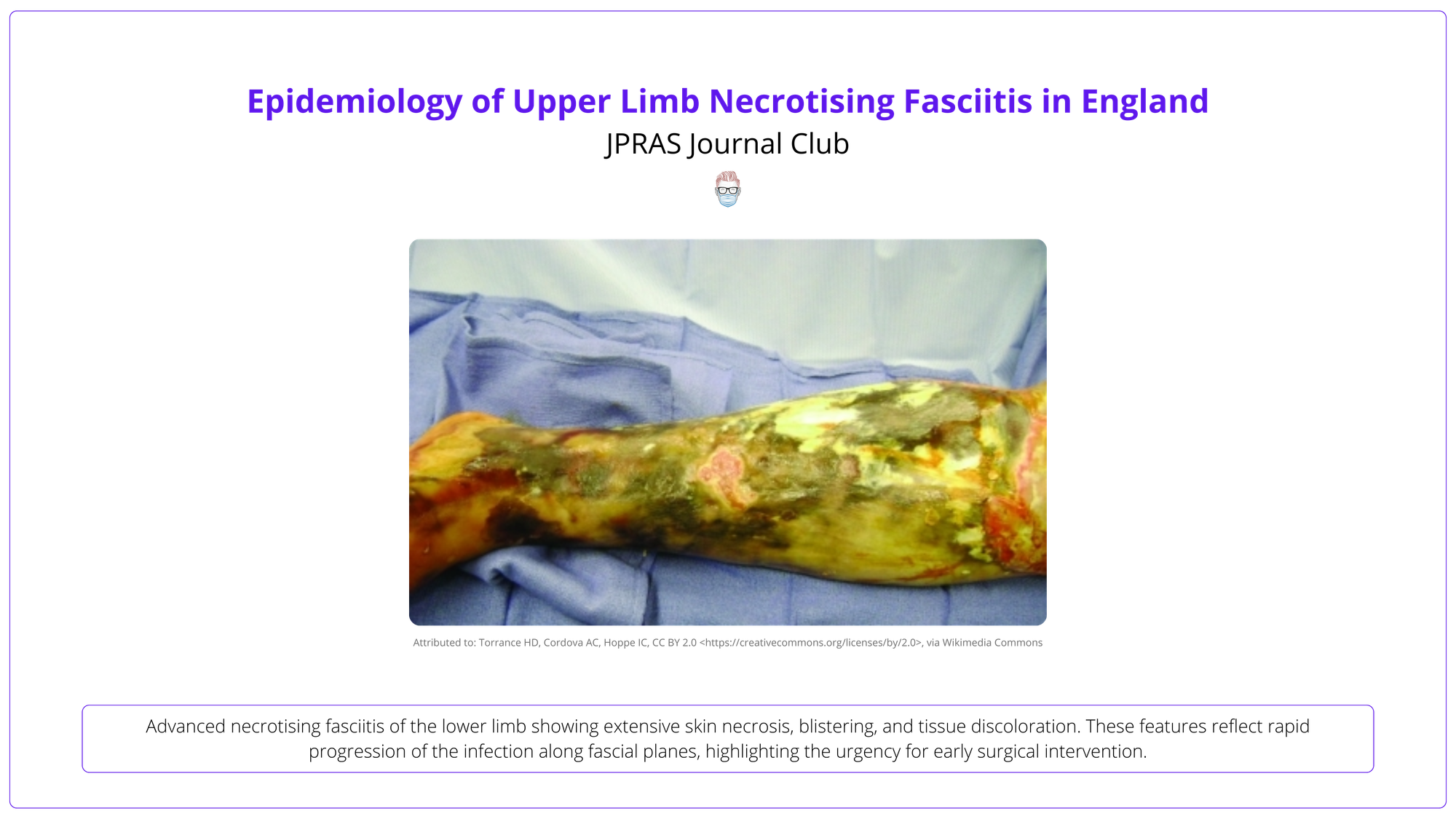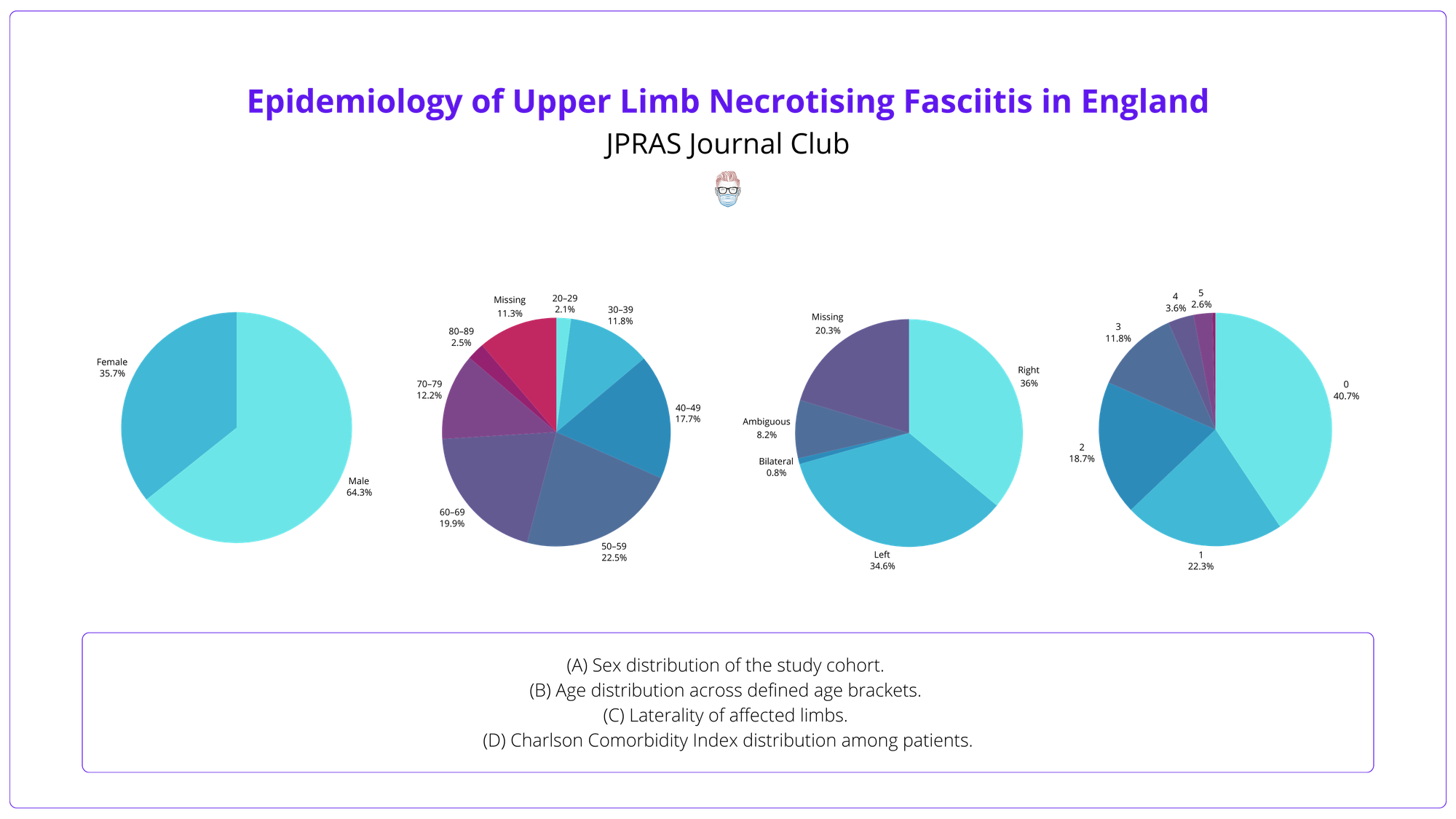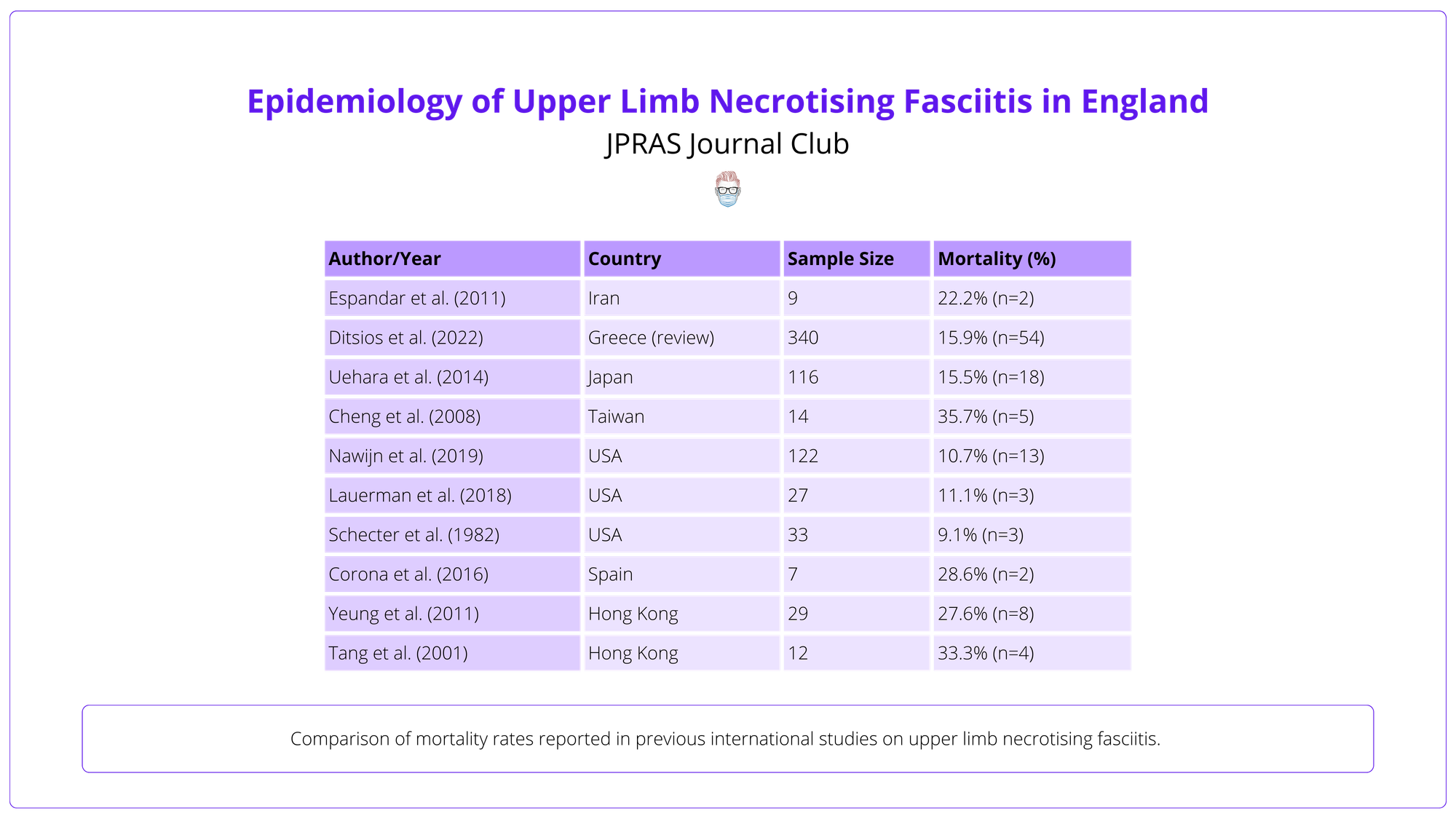In this Journal Club
Epidemiology of upper limb necrotising fasciitis in England: A national study (1998-2018). Ky-Leigh Ang et al. JPRAS 2025 May
5-Point Summary
Upper limb necrotising fasciitis (NF) is a rare, aggressive infection with rising incidence in England. This national cohort study of 728 patients highlights key demographic trends and clinical outcomes, with a 16% mortality rate despite treatment.
4-Key Findings
Incidence increased 250% between 1998 and 2013, stabilising thereafter. Most patients were male (64%), mean age of 55, and from deprived areas. Average hospital stay was 28 days. Mortality was 14% at 30 days and 16% at 90 days.
3-Critiques
HES data excludes patients who died pre-hospital, underestimating incidence. Lack of IV drug use data limits risk factor analysis. Coding limitations may result in missed or misclassified cases.
2-Practical Takeaways
NF should be considered in otherwise healthy patients presenting with severe limb pain and systemic symptoms. Early intervention and addressing socioeconomic risk factors are key to reducing mortality.
1-Recommended Reading
Uehara et al.’s retrospective study (116 patients) identifies risk factors for death and amputation in upper limb NF, offering global context to national findings.
Ang et al report on the national incidence, clinical features and outcomes from necrotising fasciitis (NF) of the upper limb using NHS Hospital Episode Statistics data over a 20 year period. Including 728 patients, this is the largest epidemiological study of upper limb NF and is striking by identifying that the majority of NF patients do not have significant co-morbidities (Charlson co-morbidity index 0-1). This alerts us to consider upper limb NF as a diagnosis to enable early intervention and impact the high mortality (16% at 90 days) reported in this excellent JPRAS paper.
5 Point Summary
This study evaluates the national epidemiology of upper limb necrotising fasciitis (NF) in England, examining incidence trends, patient demographics, and clinical outcomes over a 20-year period.
1️⃣ Hypothesis
NF of the upper limb is increasing in incidence and associated with significant mortality despite surgical management.
2️⃣ Method
A retrospective analysis of 728 patients using Hospital Episode Statistics (1998–2018), assessing incidence, demographics, length of stay, complications, and mortality.
3️⃣ Results
Incidence rose 250% from 1998 to 2013. Patients were predominantly male (64%), mean age of 55, with a 90-day mortality rate of 16%.
4️⃣ Conclusion
NF remains a high-risk condition with rising incidence and poor outcomes, particularly in socioeconomically deprived populations.
5️⃣ Implication
Vigilant recognition and prompt intervention are critical, with a need to address socioeconomic disparities in outcomes.
4 Key Findings
This national dataset reveals an increasing burden of upper limb necrotising fasciitis, with key trends in incidence, demographics, and clinical outcomes.
Incidence rose 250% from 1998 (0.004/10,000) to 2013 (0.01/10,000), then plateaued through 2018.

Most patients were male (64%) with a mean age of 55 years; 67% were from the lowest five deprivation deciles.

Average hospital stay was 28 days. Early complications included renal failure (1.1%) and UTIs (1.1%), with 30-day mortality at 14%.
Ninety-day complications increased slightly, including renal failure (3.15%) and a 90-day mortality of 16%, underscoring disease severity.

3 Critiques
While large and nationally representative, the study is limited by potential underestimation of mortality, lack of IV drug use data, and reliance on coding accuracy for case identification.
HES data excludes patients who died before hospital admission, potentially underestimating true incidence and mortality.
No data was available on intravenous drug use; a known risk factor for upper limb NF, limiting analysis of patient risk profiles.
ICD/OPCS coding may result in misclassification or missed cases, affecting the accuracy of case identification.
2 Practical Takeaways
This study provides actionable insights for early detection and risk stratification of upper limb NF, highlighting the need for clinical vigilance even in low-comorbidity patients and the impact of socioeconomic deprivation on outcomes.
NF should be considered even in healthy patients with severe limb pain and systemic symptoms, as many had minimal comorbidities.
Socioeconomic deprivation is a key risk factor. Early recognition and intervention in high-risk populations are essential.
1 Recommended Reading
Uehara et al.’s retrospective analysis (116 patients, Japan) identifies predictors of mortality and amputation in upper limb NF, supporting global relevance of early diagnosis and aggressive treatment.
Read the Article

